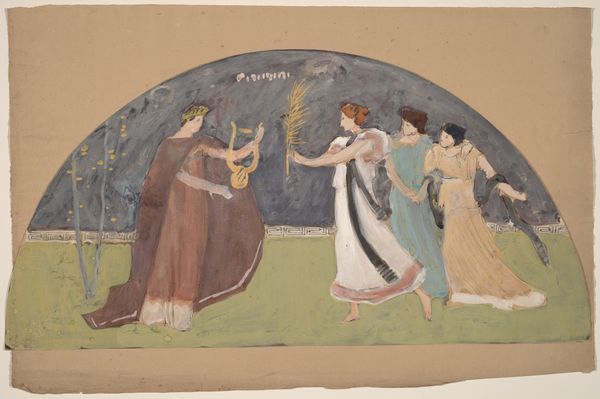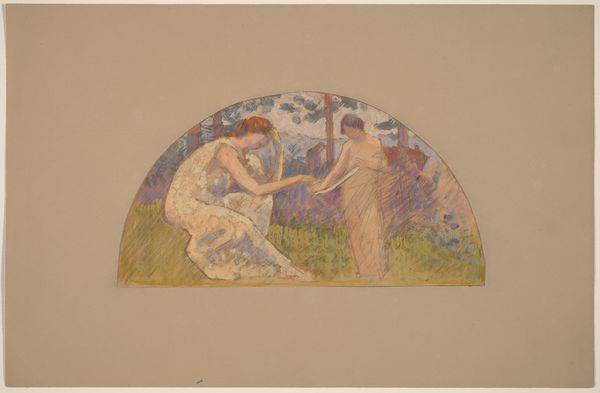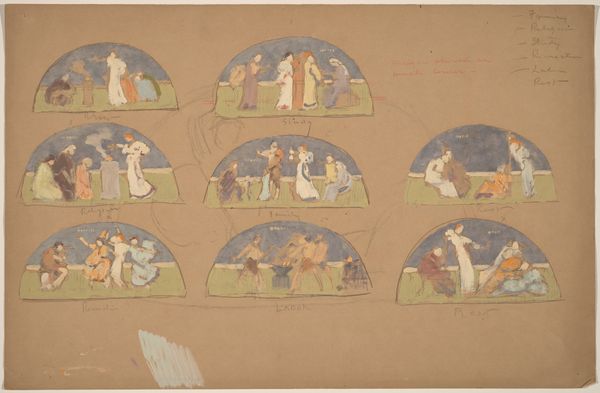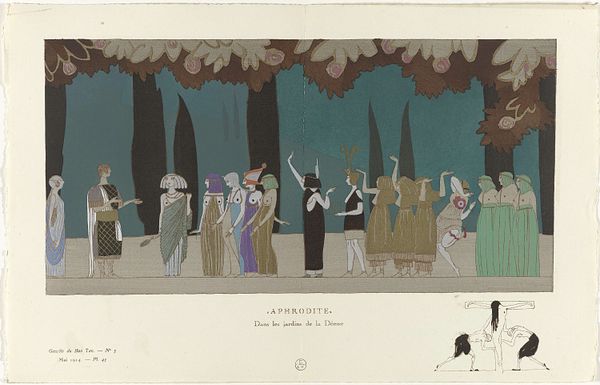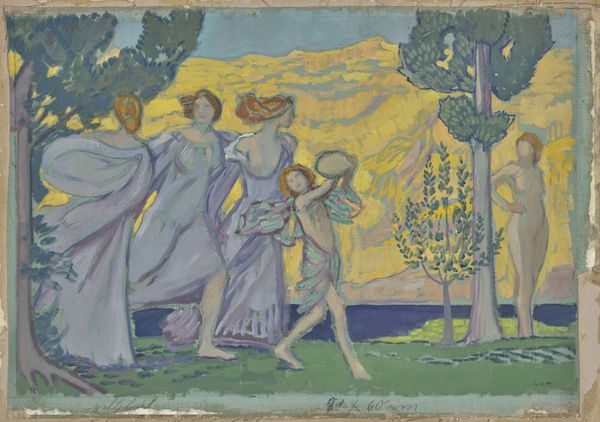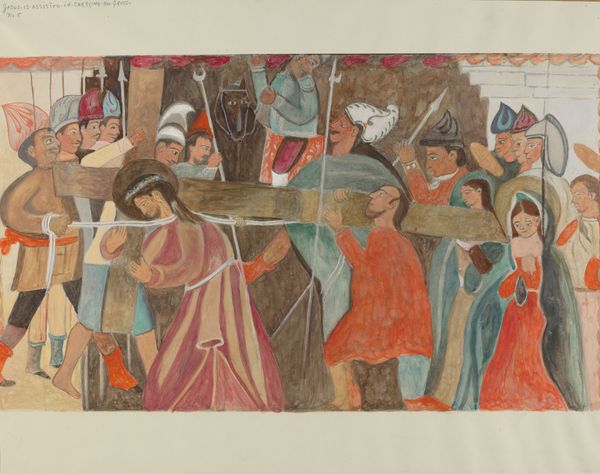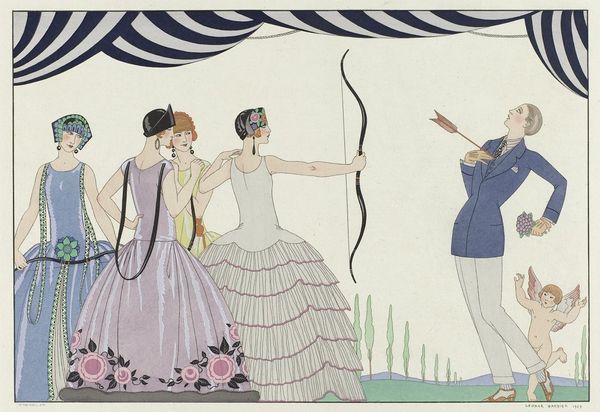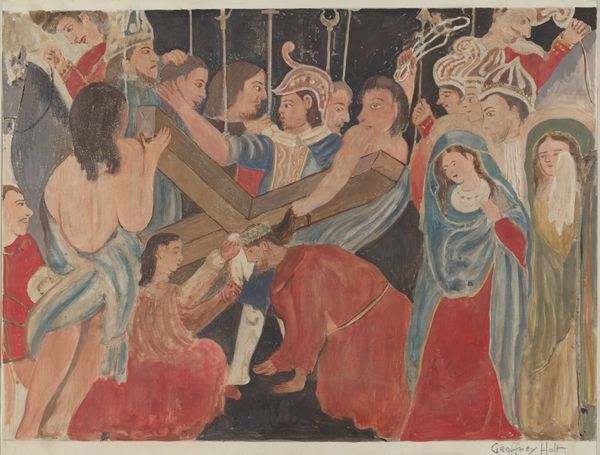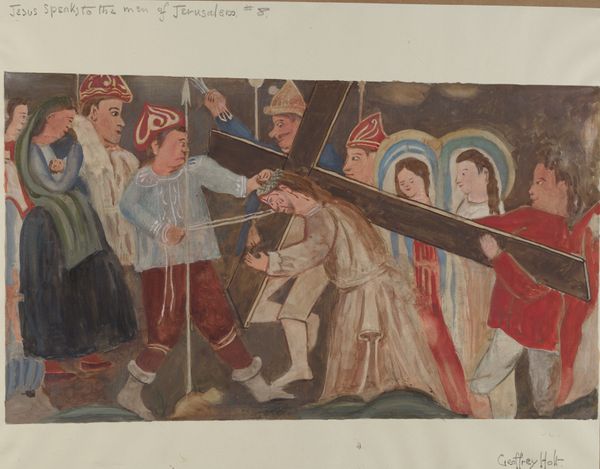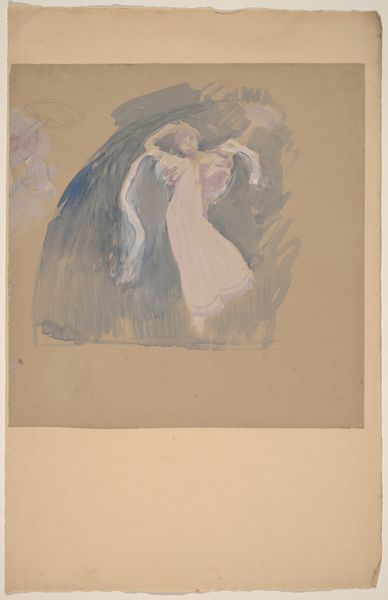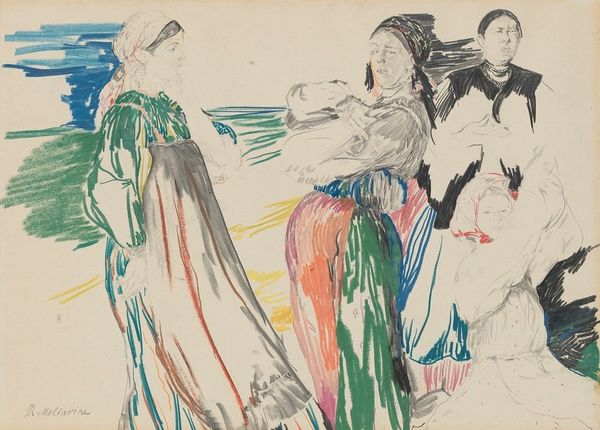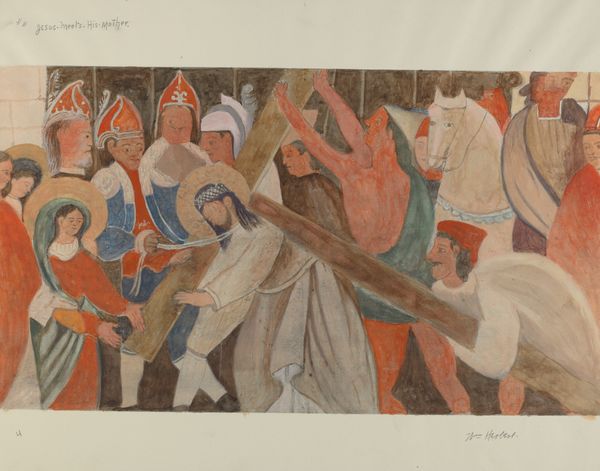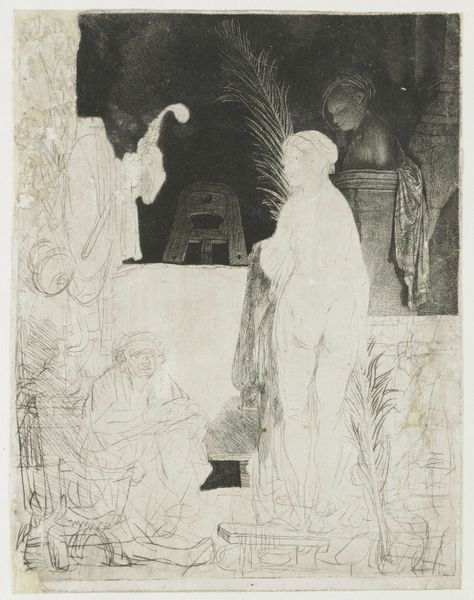
Dimensions: sheet: 31.8 × 48.9 cm (12 1/2 × 19 1/4 in.)
Copyright: National Gallery of Art: CC0 1.0
Curator: This watercolor, entitled "Study for a Lunette," comes to us from Charles Sprague Pearce, dating roughly between 1890 and 1897. The Impressionistic approach certainly softens what appears to be a fraught narrative. Editor: Indeed. At first glance, I'm struck by the tactile qualities of the watercolor washes, especially on the drapery of the figures, but the limited palette imbues a certain solemnity into what could easily be a lighter scene. It feels intentionally unfinished. Curator: Notice the formal arrangement—the rigid architectural form to the left is starkly juxtaposed with the lone, kneeling figure on the right, both set against that flat, hazy blue semicircle. I see this division less as incompleteness and more as a conscious structuring of symbolic space, wouldn't you agree? The lunette shape itself evokes notions of divine visibility, an aperture of perception. Editor: Possibly, but it is also crucial to remember watercolor paper as an inherently fibrous, handmade material. Its absorbent properties affected Pearce's technique, dictating the fluidity and layering apparent in the robes and that rather roughly painted background. It looks like he might have had to coax the materials a bit. Do we know what type of paper he used? Its origin could shed some light on his available resources and intended audience. Curator: Such context certainly holds relevance, but let's consider how the gestural rendering and tonal contrasts emphasize dramatic action, a heightened psychological tension. Observe the anguished figure seemingly recoiling in horror, while the other figures on the platform maintain an impassive solemnity. This intentional play in theatrical gesture signifies perhaps more than just materials. Editor: However, doesn’t the fact that this is a “study” change the game? Perhaps Pearce was simply experimenting with composition and quickly rendered this sketch to grasp the scene's weight and distribution using very immediate, provisional materials and actions, rather than seeking perfection. The immediacy almost undermines your reading of theatrical intent. Curator: I concede the point of intent. Regardless of Pearce's plan, his masterful handling of form and juxtaposition within a classicizing structure still generates an intense aesthetic experience. Editor: True. Regardless of material intention, the study exposes a particular kind of studio process, opening conversations regarding labor, intent, and the many stages toward finishing.
Comments
No comments
Be the first to comment and join the conversation on the ultimate creative platform.
